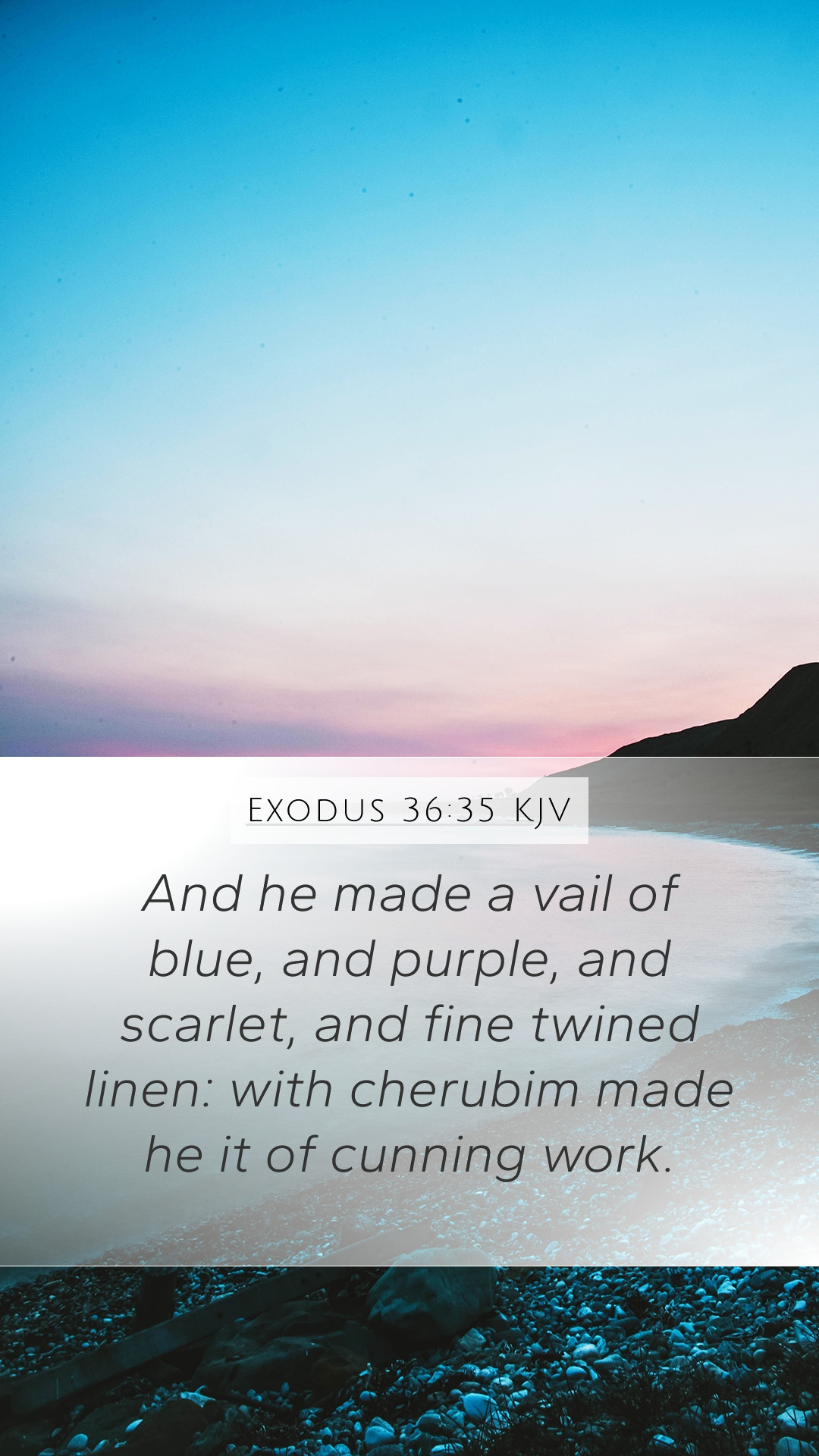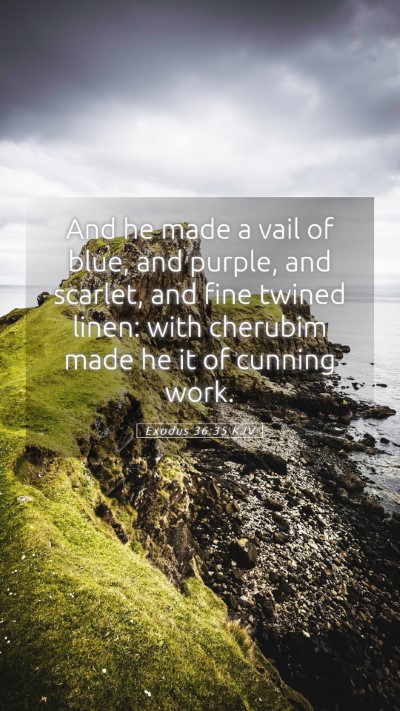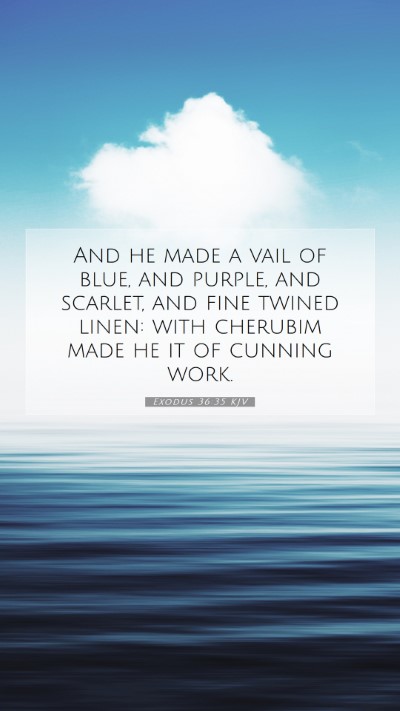Understanding Exodus 36:35
Exodus 36:35 discusses the craftsmanship and design of the tabernacle, focusing on the details of its construction to reflect God's glory. This verse is part of the broader narrative that emphasizes the importance of God's dwelling with His people and the elaborate measures taken to create an appropriate sanctuary. The verse states: "And he made a veil of blue, and purple, and scarlet, and fine twined linen: with cherubim made he it of cunning work."
Bible Verse Meaning
In this context, the meaning of this Bible verse includes several layers of significance. The colors used represent royalty (purple), sacrifice (scarlet), and holiness (blue), all of which convey critical theological themes regarding God's nature and His relationship with humanity. The cherubim reflect divine presence and protection, signifying God's holiness and the need for humanity to approach Him with reverence.
Bible Verse Interpretations
Various commentaries shed light on how this verse correlates with Israel's worship practices. Matthew Henry emphasizes that the veil serves as a barrier between the holy place and the most holy place, symbolizing the separation between God and mankind due to sin. Adam Clarke notes that the intricate work required for the veil reflects the meticulous nature of approaching God, reminding believers of the necessary preparations for worship.
Symbolism in the Tabernacle
The tabernacle's design, including the veil mentioned in Exodus 36:35, symbolizes several foundational aspects of faith:
- Holy Separation: The veil represents the distinct separation between the divine and human realms.
- Access through Sacrifice: The requirement of a veil emphasizes the need for atonement and the shedding of blood for the forgiveness of sins, pointing toward Christ's ultimate sacrifice.
- Divine Presence: The cherubim woven into the veil symbolize the angelic beings that serve and protect God's holiness.
Bible Verse Commentary
Albert Barnes notes that the intricacy of the veil signifies the richness of God’s grace and the lengths He goes to ensure He can dwell with His people. The various materials indicated by the verse highlight God's beauty and majesty, as well as the divine provisions made for worship.
Application of Exodus 36:35
For modern readers, understanding Scripture in the context of this verse can involve recognizing how worship requires intentionality and preparation. As believers, this scripture calls us to consider how we approach God, reflecting respect and reverence due to His holiness.
Cross References
Exodus 36:35 connects with several other significant verses:
- Hebrews 9:3-4: Discusses the greater reality of the heavenly tabernacle.
- Exodus 26:31-33: Details the structure and purpose of the veil in greater depth.
- Matthew 27:51: Points to the tearing of the veil at Jesus' death, symbolizing new access to God.
In-Depth Bible Verse Analysis
A thorough biblical exegesis of Exodus 36:35 invites readers to explore historical context, the significance behind the materials used, and the theological implications for worship. The verse serves as a bridge connecting Old Testament practices with New Testament fulfillment in Christ.
Bible Study Insights
Engaging in Bible study groups using this verse can provoke important discussions surrounding the themes of holiness, access to God, and the role of Christ as our High Priest. Online Bible study tools can enhance this exploration by providing additional resources like maps and historical data about the tabernacle's construction.
Conclusion
Overall, the understanding of Exodus 36:35 transcends mere historical recounting. It invites readers into a deeper relationship with God, understanding the significance of approaching Him in worship and recognizing Christ's fulfillment of the atoning need signified by the veil. The meaning of this Bible verse resonates with the call to reverence in worship, while also illuminating the way to unity with the divine through Christ.


